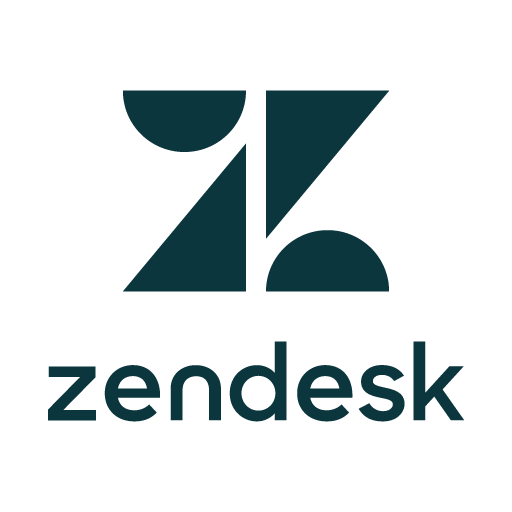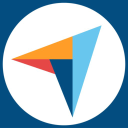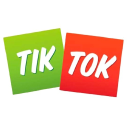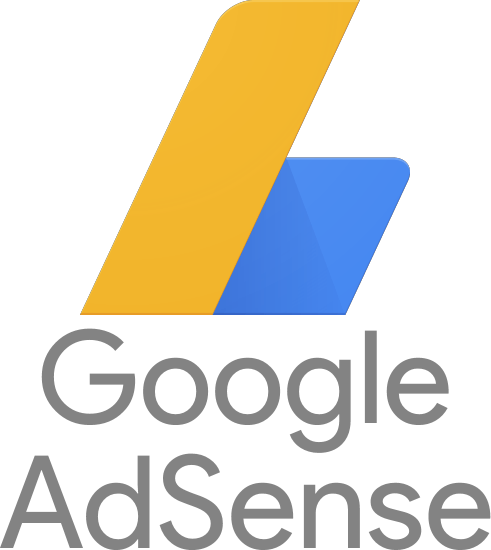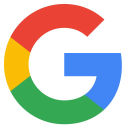
How I Built The World's Most Popular Time Tracking Tool
My name is Nenad Milanovic, and I’m the founder and CEO of COING Inc. It’s the company behind Clockify, the most popular time tracking tool in the world and the choice of several global conglomerates.
Clockify paved the way, but now, we have two other SaaS products as well. The first one is Pumble, a team chat app we launched in 2020, which is rapidly gaining traction as an efficient Slack alternative.
The latest product in our ecosystem, Plaky, a project management platform, is well underway and will be available for public use this year.

What's your backstory and how did you get into entrepreneurship?
I have been interested in developing information technology from a young age, but I think I showed the first real signs of an entrepreneurial mindset back when I was 15.
The most sustainable way to build products that will sell is to adapt instead of trying to innovate. Look for the gaps in the market and fill them out.
At the time, Internet access was a luxury in Serbia, and people mostly had the old dial-up, which was painfully slow. I sort of set up the first wireless network in my city. It started out as a fun personal project. I propped up an Omni antenna on the roof of my building, and we all used the signal to play games and share files. Soon enough, I sold the project to an American fund.
Later, I spent some time in the US working in web engineering. I had plans to return to Serbia and continue doing that, but it was not financially feasible at the time. So I ventured into consulting in software development.
This was how COING originated in 2009 and my entrepreneurial journey truly began.
Take us through your entrepreneurial journey. How did you go from day 1 to today?
My team and I used to develop software for clients, and we had a good run but understood this was not what we wanted to do forever. In the long haul, consulting was a means to fund our dream, which was always to build our products.
And getting there was quite a journey (often, the grueling, soul-crushing kind).
Our first proprietary product was kind of unexpected. There was a local regulatory change concerning FM radio broadcasting from the studio. We seized the opportunity and made a device that allowed radio stations to comply with the new regulation. It was a reliable, sturdy product — nearly every radio station in the Balkans bought it. The problem was there were only so many prospective buyers.
As demand tapered off, we had no choice — back to consulting. But we never abandoned our goal of building our own financially sustainable products.
For years, we were stuck in a vicious circle: We’d invest our hard-earned consulting money in a product and watch it fail miserably. Our spirits crushed and funds depleted, we’d recuperate for a couple of months, and try again. And again. And again.
We had 8 failed products behind us and were just about to quit for good when Clockify happened. That was 2017.
The funny thing is, Clockify wasn’t a major project we had all planned out. Building a time tracker was a back-burner idea we toyed with but never truly considered worthwhile. There were tons of time-tracking tools on the market. How could we make ours stand out?
What made us change our minds was an email we got from the time tracker we were using at the time — the subscription price was up 5x! We had 8 people on the bench at the time, and they started developing a time tracker for internal use as a side project.
We didn’t have to reinvent the wheel. Since we had already been using time trackers, we knew exactly which features we liked and what annoyed us in other such apps in the market. Thanks to our experience in using such software, we created a great initial set of features.
As we realized the app’s usefulness, we figured: why not share it with other teams? It turned out this was the best decision we ever made. Five days after its launch, Clockify already had 17,000 users.
The app’s success was spectacular. By the third quarter, the number of users soared by 400%.
The best part? It was all organic. As a team relying on a time tracker themselves, we could easily tap into what the users wanted. And unlike competitors, we offered the users what they wanted completely free of charge.
How are you doing today and what does the future look like?
Today, Clockify is the market’s most valuable time-tracking brand, with over 100,000 new users every month. Apart from the time tracking basics, it boasts a ton of amazing features, such as Employee Scheduling, PTO, Invoicing, Resource Planning, and more.
We built the brand completely organically — no paid advertising. People are often skeptical when I tell them this, but Clockify hit the number-one spot in the SERPs before we did any serious SEO optimization or started producing diverse content. The key to our success is that we offer the core of the app’s functionality completely free of charge, forever. So what you get for free when you sign up always remains free. There’s no hidden agenda, no catch. Users love that, and they trust us because of it.
Then, there are a ton of additional features you can get at different price plans, and there’s even an enterprise-level plan that allows you to host Clockify on a private server for maximum security.
The free-forever features attract a massive user base, and then, there are optional paid upgrades that make us profitable. It’s as simple as that. We replicated this formula in our team chat app, Pumble, and plan to do the same in our third and upcoming project management platform, Plaky.

When it comes to the holding company behind the apps, COING is about 200 people strong and expanding, and we’re distributed across 7 countries.
Regarding the more immediate plans for the future, the first quarter of 2022 will be all about launching Plaky and helping it soar. We’re confident it will take in the footsteps of its predecessors.
As for the long-term plans, we want to expand further and open offices in several other countries. This would open up possibilities and help us fulfill our dream of providing a full suite of tools, which would integrate to create a unified workspace to cover all aspects of work. We want our brand to become synonymous with trust, reliability, and success.
Through starting the business, have you learned anything particularly helpful or advantageous?
Probably the most important thing I have learned is that financial discipline goes a long way. It can provide you with the most precious thing in entrepreneurship — independence. I never wanted an outside party to share in the decision-making power, so I never relied on any external capital. We’ve been entirely self-funded from the start.
This way, we can do whatever we want with our money, and even if we fail, we have no one to appease.
When Clockify started, our financial discipline paid off immediately — we became cash-flow positive only months after the launch and returned all the investments within a year and a half.
Another thing I’ve learned is that having a knack for business is not enough to be a successful entrepreneur. You also need to work on developing your leadership soft skills, i.e. communication skills. Not only do you need to know how best to present your ideas, but you should also learn how to listen — to your employees, customers, market trends, etc.
Attentive listening has helped me identify many red flags before they could wreak havoc on my business.
What platform/tools do you use for your business?
Of course, we’re always the first to use our products, and we create and develop them with our teams’ needs in mind.
We rely on Clockify for tracking hours, seeing who’s working on what, analyzing our time use, managing PTO, and other time- and productivity-related matters.
We use Pumble for communication and collaboration and keep our correspondence organized in channels and DMs. We still rely on an external video conferencing tool for online meetings, but soon, we’ll have video and voice conferencing options in Pumble as well.
For a little while longer, our teams will continue using a few external project management tools, but we’ll transition to Plaky for all our project management needs as soon as it launches.
Different teams within the company use various other, more specialized tools, but these are the main ones we all rely on day-to-day.

What have been the most influential books, podcasts, or other resources?
There are two podcasts I particularly enjoy, both hosted by the brilliant Jason Calacanis. The first one is “This Week in Startups” where Calacanis interviews various business leaders and investors on all things business and tech-related.
The other one, “All-In Podcast”, Jason co-hosts with three giant names in tech — Chamath Palihapitiya, David Friedberg, and David Sacks. They cover a variety of topics, from economy to politics, and the podcasts are incredibly clever and insightful.
Advice for other entrepreneurs who want to get started or are just starting?
Of course, one of the main preconditions to success is to genuinely enjoy what you do. But, as an entrepreneur, this also means embracing change and spontaneity, as well as keeping your finger on the pulse of the industry you’re in.
We often hear that persistence pays off, but that’s often far from the truth. I’ve seen many inexperienced entrepreneurs too in love with their ideas to let go of them when they prove unsustainable. So they keep blindly pushing them forward, despite the red flags. This has happened to me too. It’s important to know when to let go.
Another piece of advice I can offer to those just starting out is this: The most sustainable way to build products that will sell is to adapt instead of trying to innovate. Look for the gaps in the market and fill them out. Offering something new and groundbreaking is amazing, but it happens once in a blue moon. And who knows, it might happen to you, but what are the chances?
This idea of adapting rather than innovating has helped us create Clockify: we took what was already there, i.e. combined the features we liked best in other time trackers, removed the ones that annoyed us, and made a move that set us apart from competitors, which was offering the bulk of the features for free and a self-hosting solution.
Are you looking to hire for certain positions right now?
We want to welcome an experienced Product Manager into our team for a remote full-time position. They would have the opportunity to work on growing the already best time tracking software in the world, Clockify. You can check out the details and apply here.
We’re also in need of a remote Assistant Product Manager, who would help us make Clockify even better. You can find out more about the position and apply here.
Where can we go to learn more?
- Website: COING, Clockify, Pumble, Plaky
- Instagram: COING, Clockify, Pumble
- Facebook: COING, Clockify, Pumble, Plaky
- Twitter: COING, Clockify, Pumble, Plaky
- LinkedIn: COING, Clockify, Pumble, Plaky
- YouTube: Clockify, Pumble

Download the report and join our email newsletter packed with business ideas and money-making opportunities, backed by real-life case studies.

Download the report and join our email newsletter packed with business ideas and money-making opportunities, backed by real-life case studies.

Download the report and join our email newsletter packed with business ideas and money-making opportunities, backed by real-life case studies.

Download the report and join our email newsletter packed with business ideas and money-making opportunities, backed by real-life case studies.

Download the report and join our email newsletter packed with business ideas and money-making opportunities, backed by real-life case studies.

Download the report and join our email newsletter packed with business ideas and money-making opportunities, backed by real-life case studies.

Download the report and join our email newsletter packed with business ideas and money-making opportunities, backed by real-life case studies.

Download the report and join our email newsletter packed with business ideas and money-making opportunities, backed by real-life case studies.
